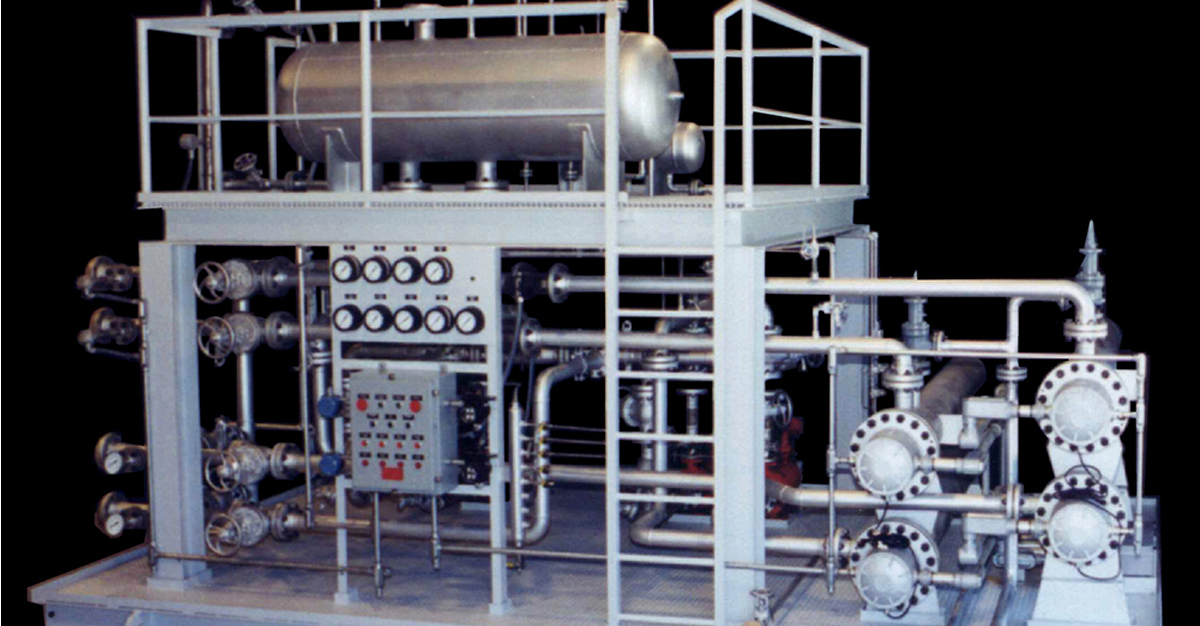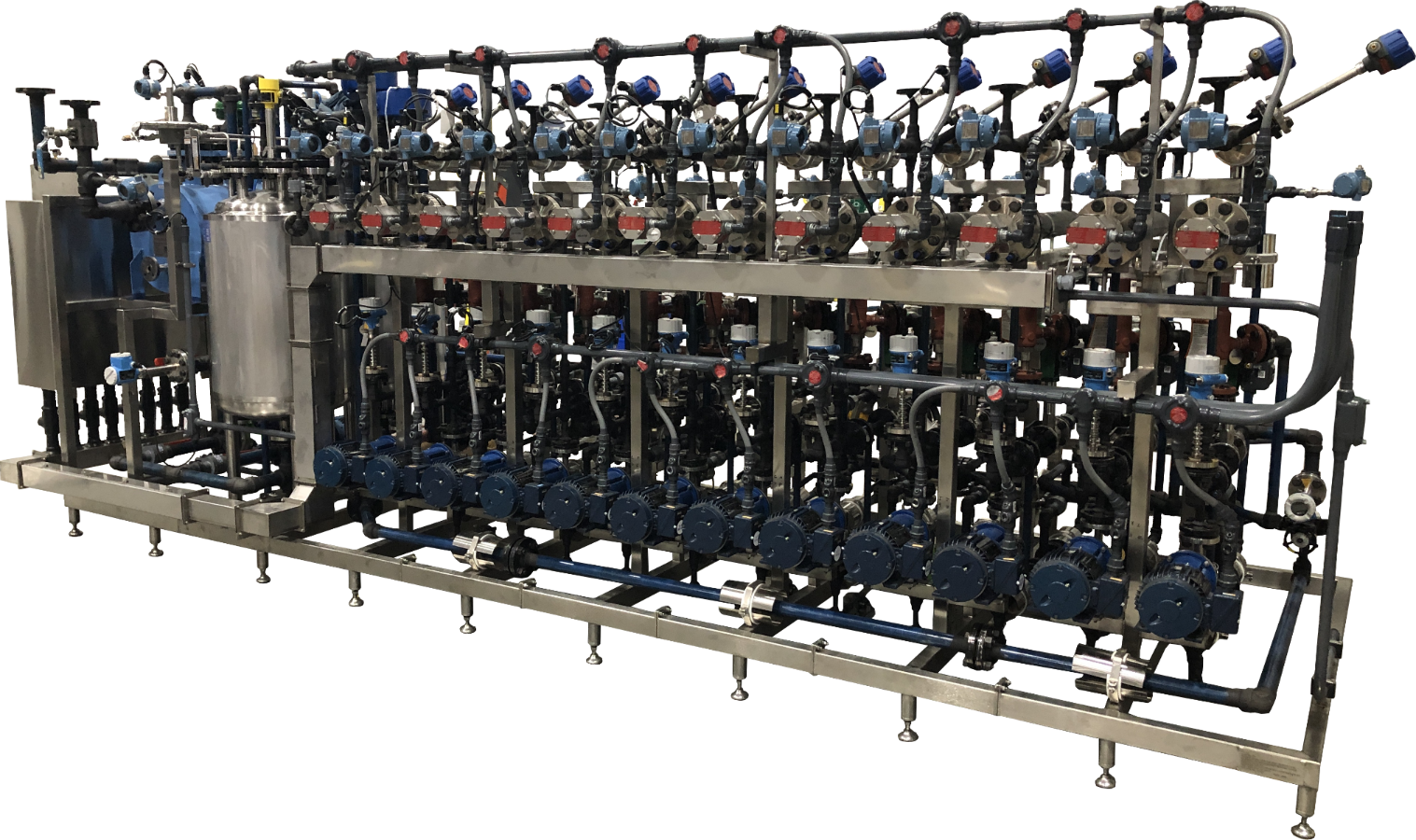A Comprehensive Overview to Choosing the Right Heat Transfer Solutions for Your Demands
Selecting the proper Heat transfer system is important for functional effectiveness. Various systems satisfy different requirements, influenced by aspects such as temperature level array and liquid type. Comprehending the concepts behind Heat transfer, such as convection, radiation, and transmission, is crucial. Furthermore, assessing power resources and maintenance practices can influence lasting efficiency. A closer assessment of these considerations reveals just how to tailor a system to particular needs. What should one prioritize in this complex decision-making process?
Comprehending Heat Transfer: Key Principles and Concepts
Although Heat transfer might feel like a straightforward principle, it encompasses a variety of concepts that are fundamental for reliable system layout. Comprehending these principles is essential for developers and engineers who intend to optimize thermal efficiency in various applications. Transmission, for example, entails the transfer of Heat via solid products, while convection describes the motion of Heat within fluids. Radiation, another key concept, describes exactly how Heat can be moved through electromagnetic waves. Each of these mechanisms plays an essential role in figuring out how energy moves within a system. By extensively grasping these concepts, professionals can make enlightened choices, ensuring that Heat transfer systems operate successfully and fulfill the certain needs of their applications
Sorts Of Heat Transfer Systems: A Review
Understanding the concepts of Heat transfer lays the foundation for exploring the numerous sorts of Heat transfer systems readily available. Heat transfer systems can be categorized mainly right into 3 kinds: radiation, transmission, and convection. Conduction involves Heat transfer with solid materials, depending on direct call in between particles. Convection, on the various other hand, takes place in liquids (gases and fluids) where the motion of the liquid itself helps with Heat transfer. Radiation involves the transfer of Heat through electromagnetic waves and does not call for a tool, enabling it to occur in a vacuum cleaner. Each type of system has unique attributes and applications, making it essential for people and organizations to meticulously evaluate their particular needs when picking one of the most ideal Heat transfer remedy.
Applications of Heat Transfer Systems in Various Industries
Heat transfer systems play a necessary role throughout various industries, impacting effectiveness and item top quality. In industrial production procedures, they assist in accurate temperature control, while in food and beverage handling, they assure security and preservation. In addition, heating and cooling and climate control systems count greatly on effective Heat transfer to keep comfy settings.
Industrial Manufacturing Processes

Various industrial manufacturing procedures rely greatly on reliable Heat transfer systems to take full advantage of efficiency and boost product top quality. In industries such as metalworking, Heat exchangers play an essential role in preserving excellent temperatures during welding, spreading, and forging. These systems ensure consistent Heat circulation, which is important for achieving preferred product homes. Similarly, in the chemical manufacturing sector, Heat transfer systems assist in exact temperature control during reactions, impacting return and security. Additionally, in textile manufacturing, efficient Heat administration is necessary for dyeing and ending up processes, influencing color uniformity and textile quality. By selecting proper Heat transfer innovations, producers can boost power efficiency and minimize operational prices, inevitably resulting in a more sustainable and competitive production environment.
Food and Beverage Handling
Efficient Heat transfer systems are just as essential in the food and beverage handling industry, where keeping ideal temperatures is important for food safety and quality. These systems play a vital role in procedures such as pasteurization, sanitation, and cooking, making certain that items are secure for usage and maintain their dietary worth. Heat exchangers, for example, efficiently transfer Heat between fluids, optimizing energy use while minimizing temperature level changes. Furthermore, refrigeration systems are fundamental for preserving disposable products and prolonging life span. The choice of Heat transfer technology directly affects operational efficiency and product honesty, making it vital for food and beverage suppliers to select the appropriate systems customized to their details handling demands. This careful selection inevitably adds to consumer fulfillment and food security.

A/c and Environment Control
While lots of markets depend on Heat transfer systems for performance, COOLING AND HEATING (Heating, Air Flow, and Cooling) plays a necessary function in keeping indoor climate control across numerous setups. These systems make use of Heat transfer concepts to control humidity, temperature level, and air quality, making certain comfort and safety in household, commercial, and commercial environments. Properly made a/c systems enhance power effectiveness, reduce functional costs, and decrease environmental effect. In industrial buildings, for example, effective environment control adds to worker efficiency and customer fulfillment. In industrial applications, a/c systems aid keep excellent problems for tools procedure and product conservation. Picking the right Heat transfer system is crucial for conference certain climate control needs and attaining general system efficiency.
Reviewing Energy Resources for Heat Transfer Equipments
In assessing energy sources for Heat transfer systems, a comparison of renewable resource alternatives and nonrenewable fuel source considerations is important. Sustainable sources, such as solar and wind, offer sustainable choices that can reduce environmental effect. Alternatively, fossil fuels remain common due to their recognized framework and power density, prompting a careful assessment of both options.
Renewable Energy Options

Nonrenewable Fuel Source Considerations
Evaluating nonrenewable fuel source considerations is important for the performance and sustainability of Heat transfer systems. Fossil gas, such as natural gas, oil, and coal, are conventional power sources that supply substantial Heat output, making them popular choices for household and industrial applications. However, their ecological effect, including greenhouse gas exhausts and source depletion, increases problems. When selecting a heat transfer system, it is essential to analyze the accessibility, cost, and regulative factors connected with these gas. Additionally, the efficiency of nonrenewable fuel source systems need to be considered, as greater effectiveness can reduce some ecological drawbacks. Eventually, a balanced approach weighing performance and sustainability can lead decision-makers towards one of the most appropriate Heat transfer this article option for their specific needs.
Aspects to Consider When Picking a Heat Transfer System
Picking an appropriate Heat transfer system needs careful consideration of various variables that can substantially influence performance and performance. One essential factor is the operating temperature level array, which dictates the materials and design ideal for the application. In addition, the sort of liquid made use of in the system-- whether gas or liquid-- influences Heat transfer performance and compatibility. The system's size and capability need to line up with the certain requirements of the operation to stay clear of inadequacies. Power source accessibility is additionally necessary, influencing operating expense and sustainability. The setup environment, consisting of area restrictions and access for upkeep, plays a substantial function in system these details selection. Lastly, regulative compliance and safety and security standards must be taken into consideration to ensure the system meets all lawful demands.
Upkeep and Effectiveness Optimization for Heat Transfer Equipments
Maintaining Heat transfer systems is vital for ensuring maximum efficiency and longevity. Normal maintenance activities, such as cleansing Heat exchangers and checking insulation, help protect against effectiveness losses due to fouling and thermal bridging. In addition, keeping an eye on system criteria, including stress and temperature level, permits early detection of anomalies, lessening downtime and pricey fixings. Implementing a precautionary upkeep routine can optimize efficiency and expand the life-span of elements. In addition, upgrading to sophisticated control systems can boost operational effectiveness by changing to varying loads and conditions. By prioritizing maintenance and effectiveness optimization, operators can achieve decreased power you can try here consumption, lower functional prices, and boosted overall system integrity, ultimately bring about far better resource use and an extra lasting procedure.
Future Patterns in Heat Transfer Technologies
As sectors progressively prioritize sustainability and power performance, future trends in Heat transfer modern technologies are established to go through considerable changes. Advancements such as innovative materials, including carbon nanotubes and nanofluids, guarantee improved thermal conductivity and efficiency. Additionally, the integration of eco-friendly power resources into Heat transfer systems is obtaining momentum, promoting environment-friendly remedies. Smart modern technologies, consisting of IoT sensors, are anticipated to change surveillance and control, allowing real-time data evaluation for enhanced performance. The development of compact and modular systems will certainly promote easier installation and upkeep, providing to diverse applications. These improvements suggest a shift towards even more sustainable, efficient, and versatile Heat transfer options, lining up with international energy objectives and environmental requirements.
Frequently Asked Concerns
What Are the Environmental Effects of Heat Transfer Solutions?
The ecological influences of Heat transfer systems can include greenhouse gas discharges, power usage, and prospective thermal pollution. Furthermore, inappropriate disposal of products and inefficiencies can add to resource depletion and environment interruption.
Just how Do I Calculate the Cost-Effectiveness of a Warm Transfer System?
To compute the cost-effectiveness of a heat transfer system, one need to analyze first expenses, operational costs, maintenance needs, and energy performance, comparing these elements against the expected lifespan and efficiency of the system.
Can Heat Transfer Systems Be Made Use Of in Residential Setups?
Heat transfer systems can certainly be used in residential settings. They supply reliable home heating and cooling down services, making homes extra comfy while potentially decreasing power prices. Their convenience permits different applications in household environments.
What Security Rules Apply to Heat Transfer Equipments?
Safety and security laws for Heat transfer systems generally include guidelines on setup, maintenance, and operation. Conformity with regional building codes, supplier requirements, and sector requirements is necessary to guarantee secure and reliable system efficiency in numerous applications.
Just How Do Various Materials Affect Heat Transfer Effectiveness?

Conduction, for instance, includes the transfer of Heat via solid materials, while convection refers to the activity of Heat within liquids. Recognizing the concepts of Heat transfer lays the foundation for discovering the various kinds of Heat transfer systems available. Heat exchangers, for circumstances, effectively move Heat between fluids, optimizing power usage while reducing temperature fluctuations. In assessing energy sources for Heat transfer systems, a comparison of eco-friendly energy choices and fossil gas factors to consider is necessary. Metals, such as copper and aluminum, conduct Heat successfully, whereas insulators like rubber and glass reduce down Heat circulation.